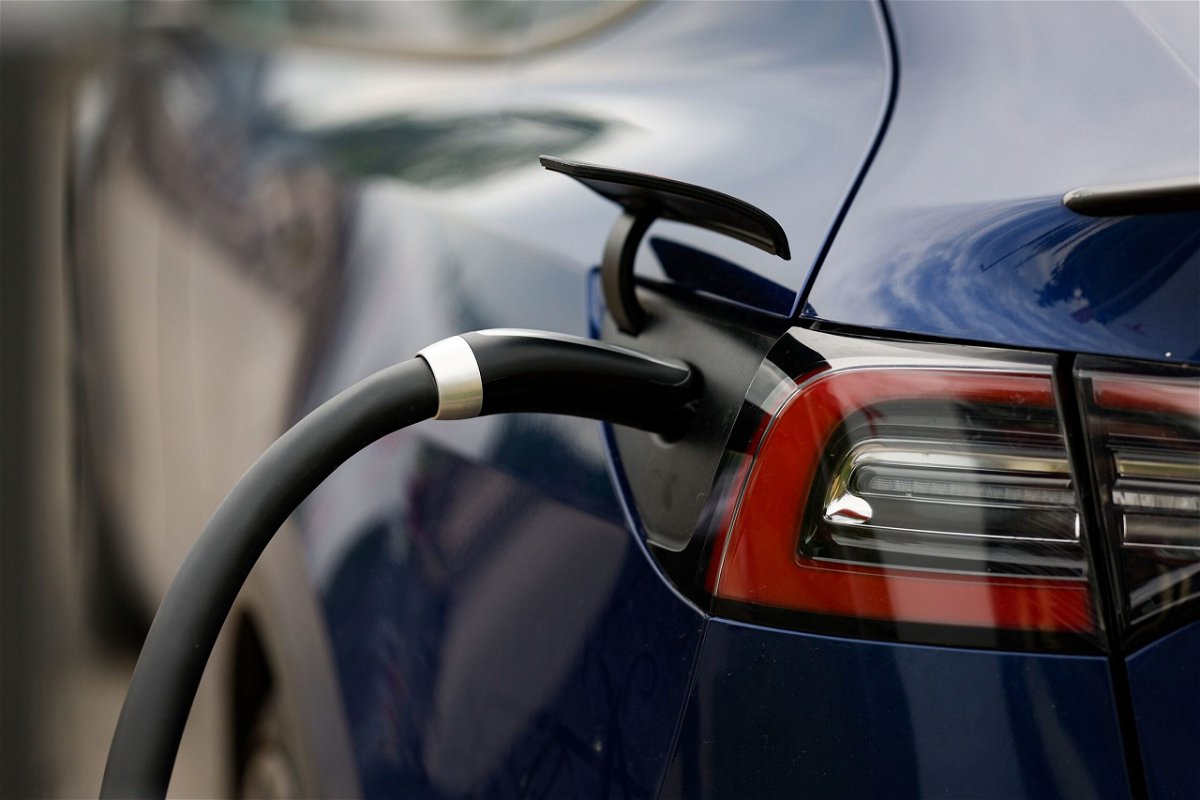Electric cars are breaking sales records, but here’s why they’re not replacing gas cars anytime soon

By Christopher Hickey, CNN
More shoppers are choosing electric vehicles so far this year than ever, according to vehicle sales data from Cox Automotive.
While EV sales have been growing healthily for the past couple of years, that trend has accelerated this year. US consumers bought nearly 300,000 new battery-electric vehicles (BEVs) in the second quarter – a new record, according to Cox.
Not only is that more than 48% higher than last year, it’s more EVs than were sold in all of 2019. That’s not even counting sales of plug-in hybrid electric vehicles (PHEVs), which can run on gas or electricity and a battery that can be recharged with either a charging cable or a generator powered by the engine.
Cox Automotive now predicts sales of fully electric vehicles in the US will break the 1 million vehicle barrier in 2023 for the first time ever. More than 557,000 BEVs have already been sold so far this year through the end of the second quarter.
Experts say EV sales are being propelled by a number of compounding factors, such as price cuts, a wider variety of available vehicles and more government and manufacturing investments.
“It’s just this perfect storm of all these things coming together,” said Stephanie Valdez-Streaty, the director of industry insights at Cox Automotive.
The Inflation Reduction Act is also driving sales growth, Valdez-Streaty told CNN.
Through the IRA, the federal government began offering tax credits of up to $7,500 on EVs at the beginning of the year, partially based on where the cars and their electrical components were sourced and assembled. Only 18 EV models out of the 97 on the market currently qualify for this tax credit, according to the Alliance for Automotive Innovation, a nonprofit trade association.
This year’s top-selling EVs – the Tesla Model 3, Tesla Model Y, Chevrolet Bolt, Rivian R1T and Volkswagen ID.4 – qualify for at least some of the IRA tax credit, Valdez-Streaty said.
The electric vehicle market is entering into a transition period, she said. More than half of consumers were considering buying a new or used BEV within the next year, according to a Cox Automotive survey released in June. Just 38% of consumers said the same in 2021.
“We’ve had early adopters, and now it’s like, how do we start to increase sales? How do we convert those considerers into buyers?” Valdez-Streaty said.
The US Energy Information Administration’s sales projections forecast that translating buyer interest into an EV-majority market will take several decades.
Assuming that the current laws and regulations remain unchanged, the annual percentage of newly purchased BEVs and PHEVs flattens at roughly 17-19% from 2035 through at least 2050, according to EIA projections. And while consumer interest in EVs is sensitive to the price of gasoline, the agency predicts an EV market share of less than 30% under even a scenario with oil prices as high as $190 per barrel in 2022 dollars.
Price is the biggest barrier for consumers, Valdez-Streaty said. Despite sharp price cuts by Tesla and Ford this year, going electric still means paying a premium over the average gas-powered model. The average electric vehicle price in July was $53,469, according to Kelley Blue Book, versus an average price of $48,334 across all vehicles.
In Cox’s consumer survey, the second biggest concern for EV considerers after price was a lack of access to charging stations.
Battery ranges have improved in recent years – the number of electric models with a range of at least 300 miles increased from 13 in 2021 to 51 in 2023, according to the US Department of Energy.
But the number of charging stations still lags behind what is needed to support a wider-scale adoption of electric vehicles. At the end of Q1 2023, there were roughly 134,000 charging stations and 3.34 million EVs on the road across the country, according to the Alliance for Automotive Innovation’s most recent Electric Vehicle Quarterly Report. To meet a charger-to-car ratio of 7:1 — which the California Energy Commission concluded would be needed to support the state’s goal of 5 million EVs on the road by 2030 — the entire country would have to set up two and a half times the current number of available chargers, the AAI report said.
Geographic disparities are also pervasive, the report said. Nearly 30% of all the country’s public charging infrastructure is in California.
The market share of new EVs is also much higher in California, according to AAI state sales data. The Golden State – along with the District of Columbia – is the only market where electric vehicles made up more than a fifth of all light-duty vehicle sales in March, the most recent month available.
Making sure the charging infrastructure is in place and operational will be important to support EV sales growth going forward, Valdez-Streaty said. So will state and national incentives.
Last year, the California Air Resources Board voted to ban sales of new gas-powered cars by 2035. At least 17 other states have agreed to follow California’s lead.
“It’ll be interesting to see over the next few years how sales start to increase with those states following the CARB regulations,” Valdez-Streaty said.
The-CNN-Wire
™ & © 2023 Cable News Network, Inc., a Warner Bros. Discovery Company. All rights reserved.






